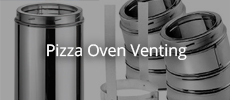Thanks UtahBeehiver, how long does it take for your oven to heat up? And how much wood would a firing take? My light duty oven took about 30-40 mins to heat up and I'd use say a milk crate worth of logs per firing. I'm worried it will take much longer with the heavy duty bricks, thus me considering cutting down the bricks.
Announcement
Collapse
No announcement yet.
Corsair's 42" Pompeii Oven Mk 2
Collapse
X
-
My first oven was built out of super duty bricks. It worked great. It did take quite a bit of wood to get up to temp though. As for blades I used 10" segmented blades from Rigid and completely burned up 3 and made it a good way into a 4th. Just for your information.
Randy
Comment
-
Did I render out the dome and the floor ahead of picking up the second load of bricks because I am excited for this find? Yes I did! Did I do some calculations and determine I want to cut the bricks down to 3" depth for what I hope will be a good balance of thermal mass and a responsive heating time? Yes, I did! I'm particularly excited about the curving floor bricks (background rendering), I think they will be eye-catching without being peel-catching!
Comment
-
After exploring a number of ideas I think my wife and I have settled on a bold idea for the design of the pizza oven.
The oven would be a normal 42" oven, with the regular woven insulation blanket around it etc. But I want to construct it as a tower-style structure as seen in these inspiration pictured attached below. My thinking is to form a columnar shaped vermicu-crete shape on top of the dome, and then add a waterproof lid (and down the sides, I am thinking waterproof coating and plastic sheeting) so that on top I can plant vines and such to grow to adorn the outside.
I know this may present some careful consideration in the curing and drying phase of the oven to make sure all the moisture is driven out of the oven, because I don't want to entrap any excess moisture before sealing it over. However, once fully cured, my original oven showed no steam cracking or other issues over the years, despite being built on the wet Oregon Coast and not being terribly well-protected from the weather. Does that align with other's experiences?
Additionally I will have to figure out a suitable way to drain the soil on top of the oven such that it doesn't affect the oven's performance. I think a spout as pictured, or multiple drilled or inserted narrow channels should divert water away from the lower oven.
Are their other design considerations I might be missing? Tell me what I am not thinking about in this early design stage!
Last edited by Corsairmo; 04-30-2025, 05:41 PM.
- Likes 1
Comment
-
I plan on using 3" of ceramic blanket, so I'm not too worried about the insulated properties of the vcrete, but I am worried about compressing the blanket with the weight of the soil. I've been thinking about if I could run some metal strapping anchored to the external facade to help bear the weight of the soil instead of just the vcrete. I've seen others on the forum use what I believe is some sort of paintable latex sealant on top of a stuccoed vcrete; which I would do along with an added layer of black plastic to doubly ensure water imperviousness.
Comment
-
I went and picked up the floor bricks today, and discovered they also have surplus foam glass and some sort of mineral-wool like insulating material. So for a song I picked up those as well... I'm about $1200 under my expected budget so far for all the fire brick and under-oven insulation (assuming I can use the very stiff mineral material as a replacement for CalSil board, still gotta do some investigating)
Comment
-
I’m also building a round enclosure for my oven. I guess we are starting a trend! My plan is a little different, but I think could be adopted to your end goal if you are open to alternate options. I built the base using 8x8x8 CMUs. I glued them together with pl500, then wrapped the outside with hardboard and filled the gaps with concrete with rebar in the cores.
Once the oven is built, my plan is to pour the enclosure walls with concrete. To form the walls I’m going to use hardboard on the outside and build up vermicrete on the sides of the dome like you have in your cad model for the inner wall. I’m aiming for the enclosure walls to be about 3.5” thick. That will give me solid structure to build the roof on but also have a nice round shape. I think I’d end up with something more like an octagon if I tried the more traditional metal studs with cement board.
For your end goal, you could pour the roof with concrete followed by a waterproofing membrane.1 Photo
Comment
-
This is a great idea for a round oven forming, the square blocks would definitely work better than rectangle for making the curve. Very well done!
I found a used compound miter saw and rigged it up with an old tile saw immersion pump and some tubing and now I've got myself a fair setup for cutting mitered bricks.The saw blade is only a 7" one I had on an old tile saw. I have new 10" blades arriving soon.Last edited by Corsairmo; 05-09-2025, 03:22 PM.
Comment
-
That saw is a great idea! I have been on the hunt for a decent used 10” or larger tile saw for months. There are a bunch of used compound miter saws around for dirt cheap and those pumps are like $20. I may have to give that a try too.
There are a few pictures of how I did the round stand form work in my build thread “40” Pompeii in Rhode Island” if you were curious. I don’t want to clutter up your thread with more pictures of someone else’s build.
Comment
-
I'm all for adapting stuff for other functions, but be aware that a mitre saw that's designed for cutting wood is not designed for masonry and the addition of a water feed introduces a further problem.
Just as dry cutting bricks or concretes with an angle grinder is an easy way to kill them, so too will the mitre saw suffer. The problem is the air intake into the motor which allows the fine dust to get in and it kills the commutator. I've killed three angle grinders this way. If the angle grinder is fitted with air intake filters (some are some not) they must be regularly and frequently blown clean with compressed air. Of course the water feed will reduce the dust issue. but the tool being electric and not designed for water does bot have a decent electrical cut out like electric tools that combine water use have incorporated in their design and manufacture. This means you may have a dangerous electrical issue. Additionally, the expulsion of water and brick sludge, depending on the tool's design, may clog up both the throat that feeds where the sawdust bag attaches and or the angle adjusting mechanism. Be careful to keep the water feed adjustment flow to a minimum, being only just sufficient to eliminate the dust. This probably means a much finer feed nozzle with a second tap near the exit. I prefer to hire a dedicated wet saw when I need it, but I realise that for a home build cutting one row at a time and adjusting angles for each row is too long term and would not be suitable for hiring a saw. A better option that many builders have used is to buy a second hand wet saw then resell it when you've completed your oven.Last edited by david s; 05-10-2025, 02:53 PM.Kindled with zeal and fired with passion.
Comment
-
Yes you are right David, there are some additional considerations for using a saw like this. I have it on a GFCI circuit to minimize the risk of electrical shock and I wired it with a ground connected to the motor body. Also, I've worked to minimize the water splash towards the motor housing as well.
As for the health of the saw, like NENewb mentioned, this was indeed a cheap used saw I bought just for this project, and I fully anticipate tossing it after I'm done with oven.Last edited by Corsairmo; 05-13-2025, 01:42 PM.
Comment
-
Mike, the bricks were a find off of Facebook marketplace from a ~somewhat~ local seller who originally got them from the shutdown of an industrial kiln operation. Even though it still took two 3hr round trips to pick them all up (super duty bricks are heavy!) it was still better than the multiple 7 hour trips it would have required to source them brand new from Portland OR; the nearest local for such supplies.
Comment





Comment